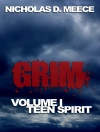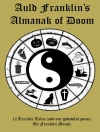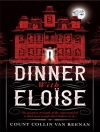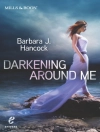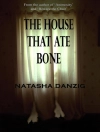In ’Lilith, ’ Ada Langworthy Collier crafts a thought-provoking narrative that intertwines themes of gender, spirituality, and the quest for identity. The novella employs a rich, lyrical style marked by vivid imagery and allegorical elements, reflecting the late 19th-century fascination with mysticism and the supernatural. As the protagonist navigates her tumultuous relationship with the enigmatic figure of Lilith, the text challenges the patriarchal narratives prevalent in biblical exegesis, elevating female experience and empowerment in a world defined by male authority. Ada Langworthy Collier, a pioneering author and advocate for women’s rights, drew upon her own experiences and the socio-political climate of her time to write ’Lilith.’ Influenced by the burgeoning feminist movement and her engagement with the spiritualist circles of the era, Collier emerged as a voice for those marginalized by traditional narratives. Her background as a poet and a writer enriched her storytelling, allowing her to explore complex themes with nuance and sensitivity. This book is an essential read for those interested in feminist literature, biblical reinterpretation, and the spiritual dimensions of identity. Collier’s insightful portrayal of Lilith resonates profoundly today, making it a timeless exploration of the struggles faced by women seeking autonomy and self-definition. Readers will find in ’Lilith’ not only a narrative but a profound commentary on the persistence of gender dynamics across time.
Om författaren
Ada Langworthy Collier (1843-1919) was an American poet and writer whose work offers a nuanced exploration of 19th-century womanhood and spirituality. Born in Dubuque, Iowa, Collier’s literary voice was cultivated through her upbringing in an era steeped in the transformative movements of abolitionism and women’s suffrage. Among her literary contributions, her best-known work, ’Lilith’ (1885), stands out for its daring portrayal of the titular figure from Jewish mythology. In this piece, Collier delves into themes of femininity, rebellion, and redemption, which was a departure from the commonly passive female characters of the period’s literature. ’Lilith’ encapsulates Collier’s affinity for rich, evocative imagery and her skillful use of lyrical verse to challenge and articulate the complexities of female autonomy and identity. Although not as widely recognized as her contemporaries, Collier’s work remains a testament to her ability to weave a narrative that transcends her time, echoing the broader literary style of romantic gothic and the pre-Raphaelite aesthetic prevalent among progressive late 19th-century writers. Her contributions to American poetry, though underappreciated in mainstream literary canon, continue to be of scholarly interest for their representation of a transitional period in both literary form and social consciousness (Laffrado, 2004).


